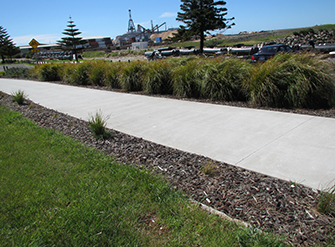

There is such a wide variety of Lomandras available today and they are not all suited for every location or climate, so how do you know which one will work best?
It has been proven that some of the toughest have to be Lomandra longifolia types, they are generally more drought tolerant, more wet feet tolerant and are longer lived. In saying that you will still need to select the right longifolia for the conditions as not all will work in every situation.
For example, Tanika® Lomandra longifolia is the number one selling Lomandra in the world, but it is not suitable for every climate or location. Tanika® Lomandra is not suited for plantings that may be subject to wet feet or in humid areas such as Queensland, however there is a range of Lomandra types that will perform well in these conditions, such as Evergreen Baby™ Lomandra labill, Shara™ Lomandra fluviatilis and Tropic Cascade™ Lomandra hystrix.
So what about Lomandra confertifolia types? Confertifolia types naturally grow in dry sclerophyll forests with some shade, this is probably the reason they tend to fail in humid climates, wet feet, dry climates, full sun positions or in heavier soil types.
However, in the right situation, such as maintained gardens, Lomandra confertifolia can work, but in mass plantings such as roadsides and landscapes they will almost always be overtaken by weeds and fail.
They also have a tendency to discolour much worse than other Lomandra types in frost and also struggle in very dry conditions due to their less vigorous root system.
To futher cloud the condition, recent investigations have actually found that there are at least two distinct forms of Little Pal currently on the market, unfortunately with this you get inconsistency within a variety and you will not know exactly which one you are purchasing.
Click here to find out more information on which is the best Lomandra for the conditions.
